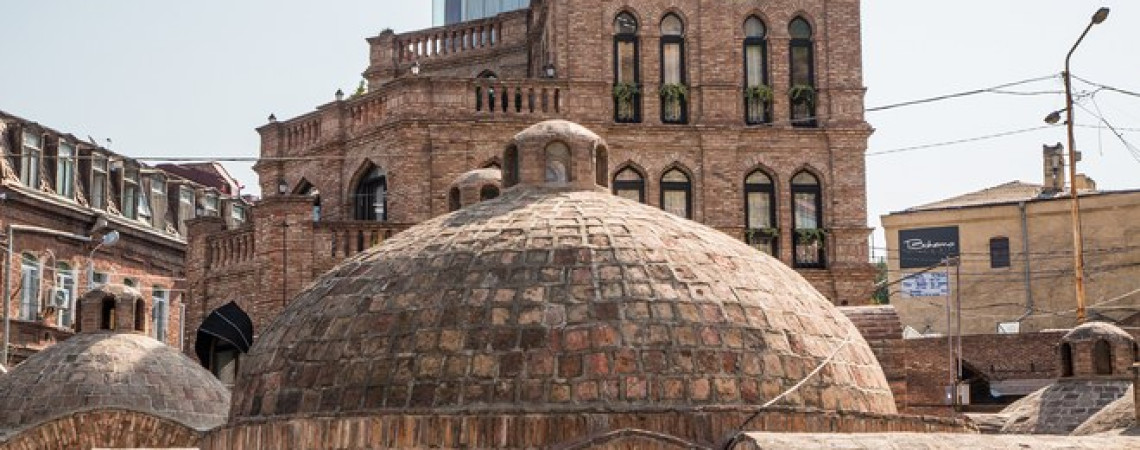Read the article about Georgia published at online journal VOGUE.
Georgia has long been a collision of cultures, as it borders Russia and Turkey, Armenia and Azerbaijan, and is fairly close neighbors with Iran. The Arabs, Russians, and Ottomans have all passed through this Silk Road crossroad and have left their mark and influence throughout the years. Geographically, Georgia’s an evocative spot, with the Caucasus Mountains to the north and the Black Sea to the west. This rich, varied place makes it a natural fit for a growing fashion scene, as was evident at the recent Mercedes-Benz Fashion Week Tbilisi Fall 2017, held in the capital city.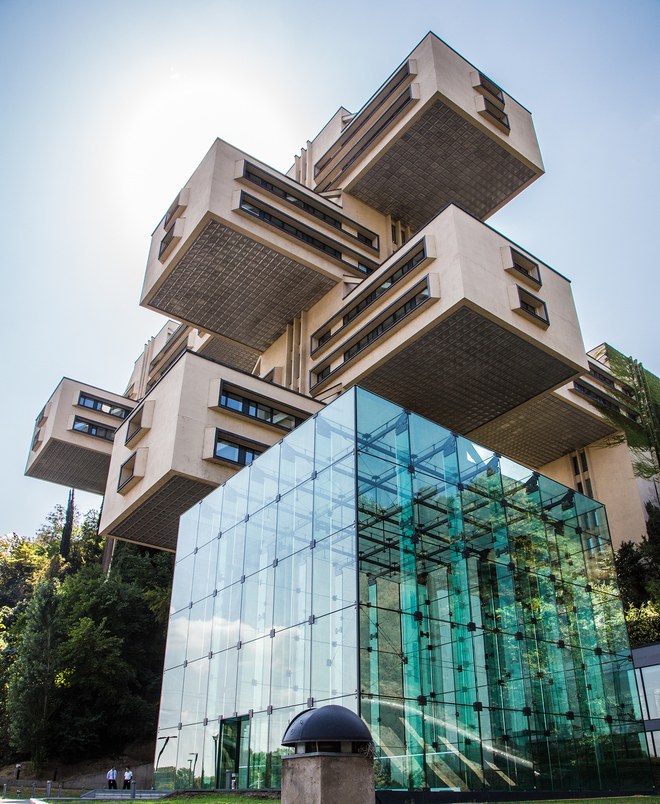 Yet like many of its Eastern European neighbors, it has remained relatively off-the-radar until recently. The once–Georgian Soviet Socialist Republic, now known simply as Georgia, declared independence from Russia in 1991. Still in a state of disrepair, the country saw a mere 1,500 visitors in 1997. The small country has since bounced back considerably—it celebrated its six-millionth visitor in 2016 with a countrywide celebration when the Dutch traveler randomly arrived. The fanfare was not surprising to locals, as they celebrate visitors regularly.
Yet like many of its Eastern European neighbors, it has remained relatively off-the-radar until recently. The once–Georgian Soviet Socialist Republic, now known simply as Georgia, declared independence from Russia in 1991. Still in a state of disrepair, the country saw a mere 1,500 visitors in 1997. The small country has since bounced back considerably—it celebrated its six-millionth visitor in 2016 with a countrywide celebration when the Dutch traveler randomly arrived. The fanfare was not surprising to locals, as they celebrate visitors regularly.
Aside from Trump’s attempt to erect yet another tower in the country’s seaside town of Batumi, the soon-to-be Georgian Riviera, Georgia made it into the news when the New York Times listed it as one of its 52 places to visit in 2015. Their premier wine region of Kakheti was recently touted as a wine region to watch by Wine Enthusiast magazine and Condé Nast Traveler, and CNN’s Anthony Bourdain gave Georgia his discerning seal of approval.
Recent accolades aside, there is something indescribably wonderful about arriving in the capital city of Tbilisi. At first look, while arriving in the middle of the night, you can tick off Old World wonders: stately squares, city walls, and dimly lit castles in the distance. In the daylight, it’s a mad mix of many eras heading in several different directions.
Georgia’s turbulent past as well as its ambitious future seem to coexist side by side: In the architecture alone, you see well worn cobblestone streets and Art Nouveau buildings, some of which are impeccably restored while others remain in a state of disrepair. Orthodox churches stand next to stark modern Soviet structures and shiny new buildings desperate to express themselves. In Abanotubani, the bath district, distinctive dome-shaped sulphur bathhouses are the foreground for brightly colored buildings. The Kala district, a bohemian enclave with a web of cafés, wine bars, and shops, is situated below Narikala, the city’s 4th-century fortress.
If your time in town is tight, hire a private driver or cab for a few hours as they’re reasonable and efficient in covering the expansive urban sprawl. Cab drivers will wait outside while you snap a selfie or watch a wedding go by. Many people speak English but it seemed to elude the driving community. Have maps ready and theatrics in order, as you may have to act out your destination. (It shouldn’t be too hard, as there are several can’t-misses in the city.)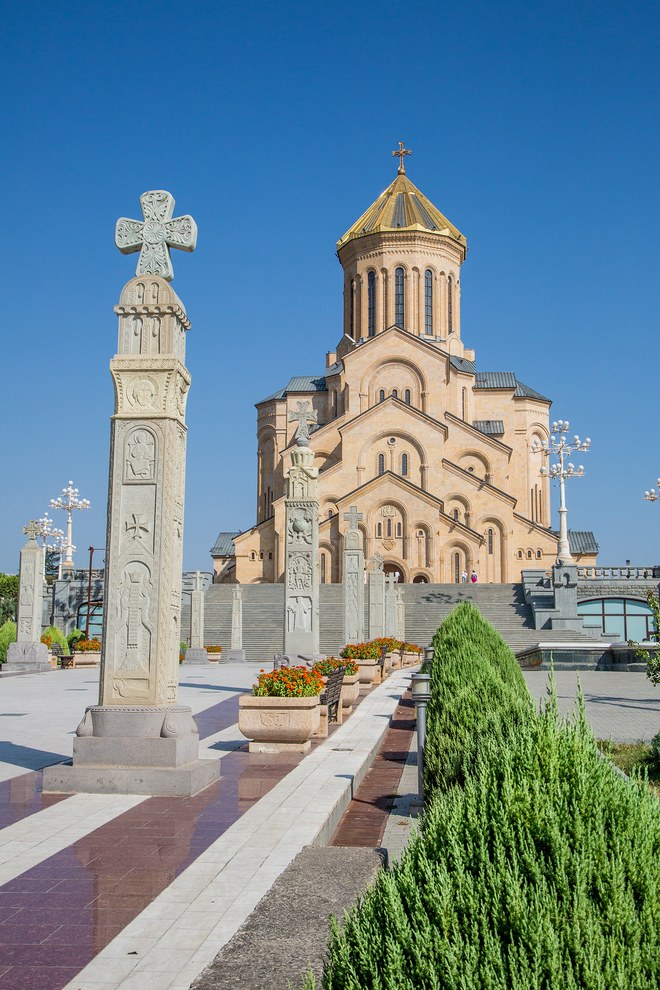
The Holy Trinity Cathedral of Tbilisi is breathtaking on a Taj Mahal–like level. It feels that epic. It was shocking to hear that it was recently built, between 1995 and 2004. Located in the historic Avlabari neighborhood, it’s the third-tallest Eastern Orthodox cathedral in the world. Performances aside, the Moorish Revival style of Tbilisi’s Opera House is something to look at, both inside and out. Dating back to 1851, it’s floor-to-ceiling operatic opulence.
Pop by the Persian sulfur baths for a look outside and a soak inside. Pushkin was one of many who believed the natural, piping hot waters below the city healed all. Banquets, dinners, and parties often take place below the city in and around the baths.
Newer points of interest in Tbilisi are Freedom Square, the Parliament Building, and the Presidential Building. The Rike Park Concert Hall and Exhibition Center feels Frank Gehry–esque as it too is meant to celebrate the modern creativity in the city. Beside Rike is the iconic Bridge of Peace, a bow-shaped pedestrian bridge built in 2010 connecting old city to new.
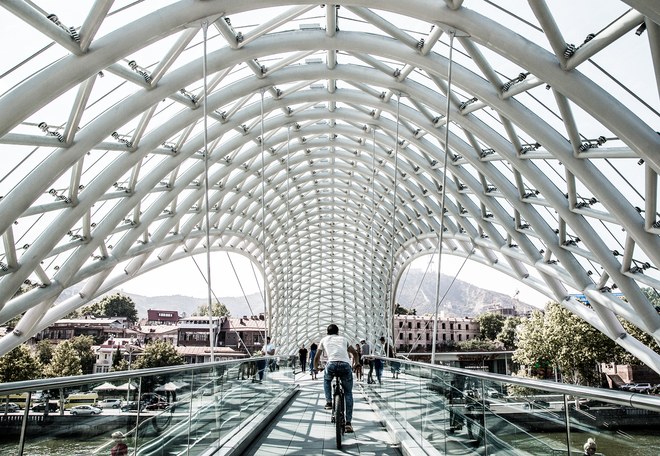
Great views can be seen at several vistas throughout Tbilisi. The Holy Mountain of Mtatsminda can be reached by funicular or car. The Mtatsminda plateau at the Funicular Complex provides a stunning Los Angeles–like view with the city sprawl below, the green hills all around, and a George Jetson–style home within view. The historic funicular building at the plateau dates back to 1936. Like many buildings in Tbilisi, the older exterior is belies the more modern and sleek interior.
The signature Funicular Restaurant serves khinkali, traditional Georgian dumplings, and khachapuri, the national dish of Georgia—a flatbread with cheese topped with a runny egg. It’s far more decadent and delicious than it sounds. The Lounge Bar above is sexy and sophisticated, with the best sundowner in town.
The Rooms Hotel, a former publishing house in the Vera neighborhood, is a Designs Hotel, a hipster hub of activity during Georgia’s Fashion Week. Art and architecture buffs will revel in the dark wooden floors and weathered leather furniture while ogling at the artwork throughout.
Rooms Kitchen and Lolita restaurants play a part in the new foodie scene in the city. However, the head of that movement is Tbilisi’s own Tekuna Gachechiladze. The Writer’s House, a Euro-Georgian Art Nouveau building in the Sololaki neighborhood, is the perfect setting for her Caffe Littera, which puts a modern spin on Georgian classics.
Whatever the meal, copious amounts of Georgian wines are served throughout. Georgian wine-making methods that were developed 8,000 years ago are still being put into practice today. This involves fermenting and storing the wine underground in egg-shaped clay jars called kveri, and was listed on the 2013 UNESCO Intangible Cultural Heritage List.
For a look at the vineyards, drive two hours from city center to the Kakheti wine region. The Silk Road Group recently took over the Tsinandali Complex which consists of a museum, a garden, a café, and the historical Tsinandali Winery, with wines in an old stony cellar dating back to 1814.
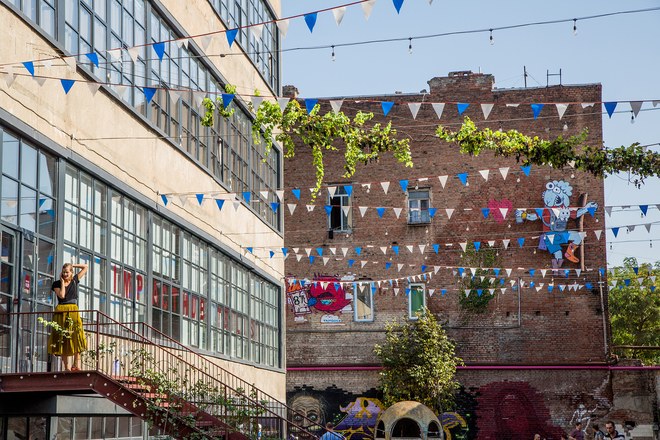
In the city, contemporary culture continues to explode with pop-up shops and art and photography exhibits in hubs like Fabrika Hostel & Suites. Run by the same team behind Rooms, Fabrika is a hostel more in line with Ace Hotels. The lobby encourages collaboration, inspiration, and relaxation with oversized hammocks, shared table spaces, and large walls of art, while the graffiti-filled complex is home to buzzy clubs, indoor-outdoor restaurants, and chic boutiques. For Old World one-off souvenirs hit Dry Bridge for vintage jewelry, cocktail glasses, and USSR memorabilia.
As slow as life may unfold for locals today, Georgia is definitely on the fast track to become the next Berlin or Prague tomorrow. Best to go sooner rather than later—it’s sure to be on everyone’s mind in no time.
source : www.vogue.com



